SCOUTING AROUND THE WORLD WITH THE JAMTRAIN
SCOUTING AROUND THE WORLD WITH THE JAMTRAIN by Hartmut Keyler, Munich
© Copyright 2023 by Spurbuchverlag
ISBN 978-3-88778-630-4
The Deutsche Nationalbibliothek lists this publication in the Deutsche Nationalbibliografie; detailed bibliographic data are available on the internet at http://www.dnb.de
Publication © by www.Spurbuchverlag.de
Am Eichenhügel 4, 96148 Baunach, Germany
All rights reserved.
First published in 2023
No part of the work may be reproduced or – by application of electronic systems – processed, copied or broadcast in any format (print, photocopy, microfilm, CD or any other process) without approval of the copyright holder.
Production: pth-mediaberatung GmbH, Würzburg
Printed in the European Union
For further information on Spurbuchverlag visit www.spurbuch.de and www.scoutingpress.com
FOREWORD
I will not hide the fact that I felt it a real pleasure and a personal privilege when my friend, the architect, artist, designer and cartoonist Hartmut Keyler, asked me if I would agree to write these few words as an introduction to this JAMTRAIN book.
Christlicher Pfadfinderinnen und Pfadfinder since 1949, Hartmut twice served on the European Scout Committee and on the World Scout Committee.
I found it a real pleasure because it gives me the opportunity to give credit to Hartmut’s openness to creative ideas and thinking.
We, as Scouts, say that Scouting must be simultaneously serious and fun. Hartmut combines the two characteristics.
Hartmut is a recipient of the Bronze Wolf, the only award given by the World Scout Committee of the World Organization of the Scout Movement, and the highest honour for outstanding service of the most exceptional character to the World Scout Movement.
Seriousness is to be found in Hartmut’s Scouting career. Being a Scout in the Christliche Pfadfinderschaft Deutschlands and the Verband
But Hartmut is also well known within the Scouting world for his passion for drawing and sketching Scouts or Scouting situations with imagination and fun. His drawings, with their very precise traits, always relate to a character or a situation.
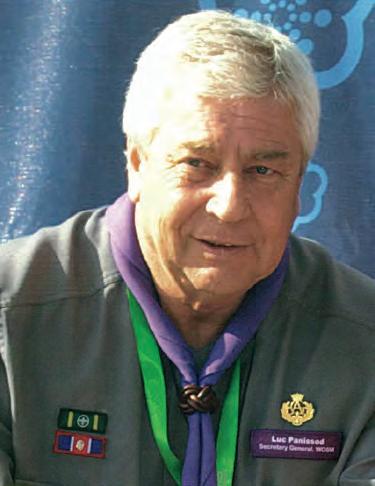
In creating this book, Hartmut achieves an intelligent combination of official logos, national symbols, and colours. Through his drawings, he focuses on the individual Jamboree core message, essential in Scouting, which is to connect people. In keeping the different characters of the Jamborees, the host countries, cultures, customs, and symbols in mind, Hartmut is at the same time expressing the variety of Scouting and also the unity of the World Scout Movement.
It is also a personal privilege that Hartmut has been thinking of me to write these few words. Hartmut and I are indeed bound by a forty-year friendship, born when I joined the World Scout Bureau as a young Director in 1982. Over the years our friendship has strengthened, and I consider Hartmut as one
of my mentors in Scouting. We attended so many Scout events together and I have learnt so much from him. No one will be surprised that we share the same points of view about many concepts, ideas, and convictions concerning Scouting.
Thank you Hartmut for your guidance, wise advice and friendship over all these years.
Luc PanissodPREFACE
The Railway, a symbol of Moving, Transport and Connection, has inspired me to see close similarities with the content of what we aim for and experience in World Scouting. Railway embodies those elements, as the connection of places, cities, countries and even continents – and also as the meeting of peoples, the discovery of other cultures, countries and landscapes offering adventures and surprises. From this point of view the train is a vivid, meaningful and highly representative medium for considering what we are doing in Scouting and how we are doing it.
I believe that letting such important life experiences of hundreds of thousands of Scouts worldwide in World Jamborees pass before us would be and represent an important part of our Scouting history. That is why I have chosen the term “JAMTRAIN“:
The Jamtrain, an impressive item to look at and enjoy, is an ideal and representative medium. The official Jamboree logos, specific items from the cultural backgrounds of the host countries, symbols and colours, the contemporary style of the writing, the World Scout Badge – all this was in my mind when designing the individual pieces.
One of my intentions was to show the huge individual diversity in time, host countries and their culture, since I have personally had the privilege of participating in 16 of the past 24 World Jamborees (the first one in 1951, as a boy) – so far!
There have been hundreds of events, impressions and experiences, as well as direct contact with so many Scouts and their leaders from all around the
world. It was my wish to portray all these experiences in a colourful design concept, impressive because of the diversity of the graphics, but always in a context to include the historical background.
For the locomotive and the cars – in two different lengths – I used models from the world-famous German manufacturer MARKLIN, byword for high quality (electro-locomotive BR 193, NO.36190; cars Art. 4415 and Art. 84735). The whole train is to HO and 5.6 metres (18 ft. 4 in.) long – a wonderfully varied colourful sight.
The official Jamboree participant badges are part of my own collection. The texts to represent the individual Jamborees are partly drawn from publications by the World Organization of the Scout
Hartmut KeylerMovement or from literature concerning the events.
I am grateful to my grandson Florian Keyler, a passionate Scout himself, who helped with the photographs and the technical adaptation of the train pieces and badges. My thanks also go to Mr. Luc Panissod, the Former Secretary-General of WOSM, for his inspiring and friendly words.
May the JAMTRAIN continue to transport the important peace-message of Scouting throughout the world.
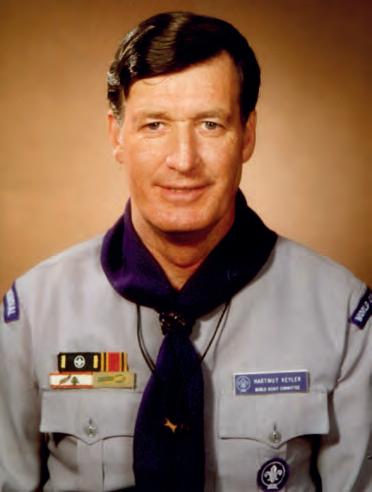 Hartmut Keyler
Hartmut Keyler
JAMBOREE –A FASCINATING SCOUTING EVENT
In 1913
Baden-Powell felt that it would be of great value to the Scout Movement to call his Scouts together for some spectacular activity every two years. Unfortunately, because of the war, all plans for an event in 1915 had to be cancelled. In summer 1916, Baden-Powell appointed a planning committee to send a provisional prospectus for a 1917 event to Percy Everett, the Secretary of the Scout Association, for consideration.
The term “Rally” or “Exhibition” no longer suited Baden-Powell. Something more expressive was called for. From deep within, possibly lodged there on one of his trips to America, he pulled the word “Jamboree”. “But you can‘t possibly use that word for a Boy Scout event!” someone told him. “And why not?” Baden-Powell wanted to know.
“Have you looked it up in the dictionary?“
Baden-Powell hadn‘t! But now he did:
Jamboree (jam-bo-r^) n. (a slang word, prob. arbitrary), a carousal; noisy drinking bout; a spree; hence, any noisy merrymaking (slang)”.
ln lexicography “Jamboree” is seen as an Americanism which goes back to 1860-1865, symbolizing a loud and happy meeting. It is guessed that the term consists of the words “Jabber” (fast unclear talking) and “shivaree” (loud fun) with “m” for jam.
Although these dictionary definitions were not particularly dignified, Baden-Powell happened to like the word, and with no better suggestion forthcoming “Jamboree” was it!
The Jamboree Committee held its first meeting on 26th July 1916 and decided “that an Imperial and International Jamboree shall be held in 1918 –provided the war was over in 1917”. That optimistic hope was not fulfilled. By November, Baden-Powell was forced to cancel all thought of a 1918 Jamboree. He stated: “We are obliged regretfully to put it off until happier times are in sight”.
The happier times arrived with the Armistice in November 1918. Baden-Powell reactivated the Committee and made public the plans for holding a Jamboree in 1920: “The Jamboree, be it understood, meaning an exhibition of work done by Scouts together with demonstrations of their activities, with displays, rallies and competitions both indoor and out-of-doors”. At a meeting in 1919, the Jamboree Committee agreed that the location of the Jamboree would be Olympia, a huge glass-roofed exhibition hall in the heart of London.
The WORLD SCOUT JAMBOREE is a worldwide Scouting event for boys and girls from all over the world, for an exciting programme of global development, peace, cultural understanding, adventure, fun and friendship. It provides young people with opportunities to participate in programmes, events, activities and projects that contribute to their growth as active citizens. It is not intended here to go through the whole history of over one hundred years of World Scout Jamborees. However, it should be stated that, mainly through immense growth and continuous success, the periodical World Scout Jamboree is a stable factor in the World Organization of the Scout Movement. We look back on one hundred years of a periodical event which has proved to be a lifelong adventure, experience and memory for altogether – around 570,000 Scouts worldwide (not counting the hundreds of thousands of visitors).
That was the beginning of a great series of World Scout Jamborees, about hundred years ago!
Hartmut Keyler
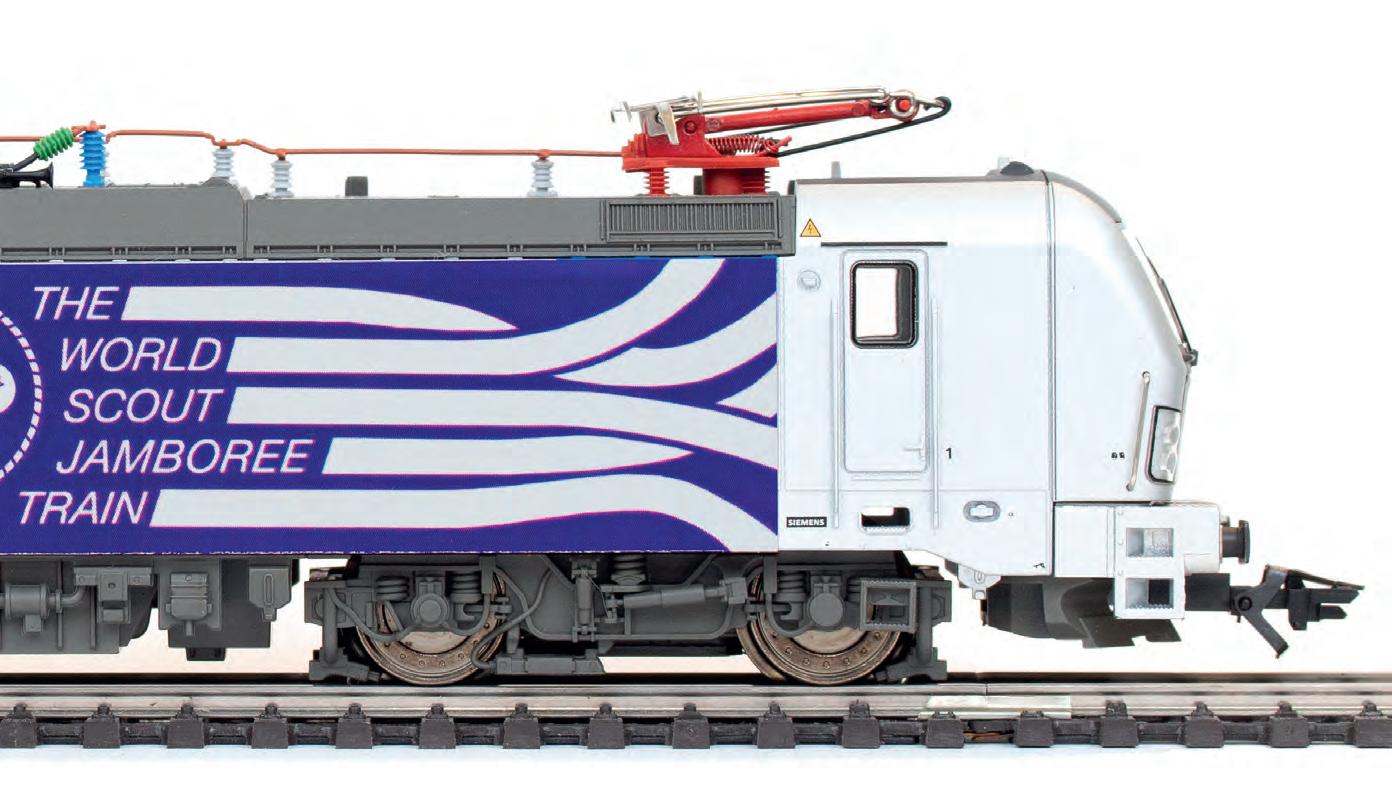
8,000 Scouts attended, from 34 countries represented at the roll call. The location was a huge glass-roofed building, the Olympia Hall in London, covering six acres. The concrete floor had to be covered with earth for competitions. Some non-Scout representants: an alligator from Florida, a baby crocodile from Jamaica, a lioness cub from Rhodesia, monkeys from South Africa, a baby elephant, a camel...
1st WORLD SCOUT JAMBOREE 1920
Lord Baden-Powell was acclaimed “Chief Scout of the World”. He said: “lf it be your will, let us go forth from here fully determined that we develop, among ourselves and our boys, a comradeship through the worldwide spirit of the Scout brotherhood, so that we may help to develop peace and happiness in the world and goodwill among men”. The Badge was only issued after the Jamboree, as a souvenir.
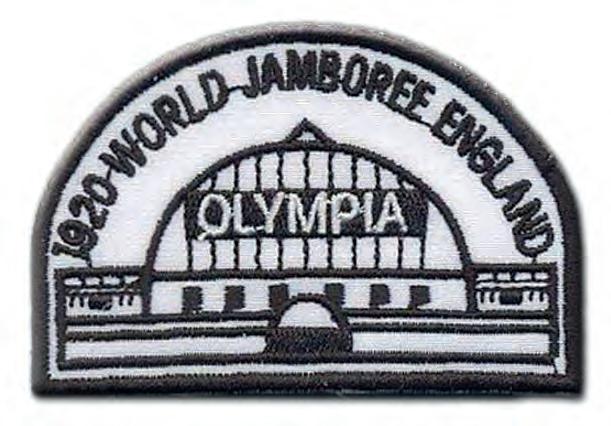
OLYMPIA/LONDON, ENGLAND
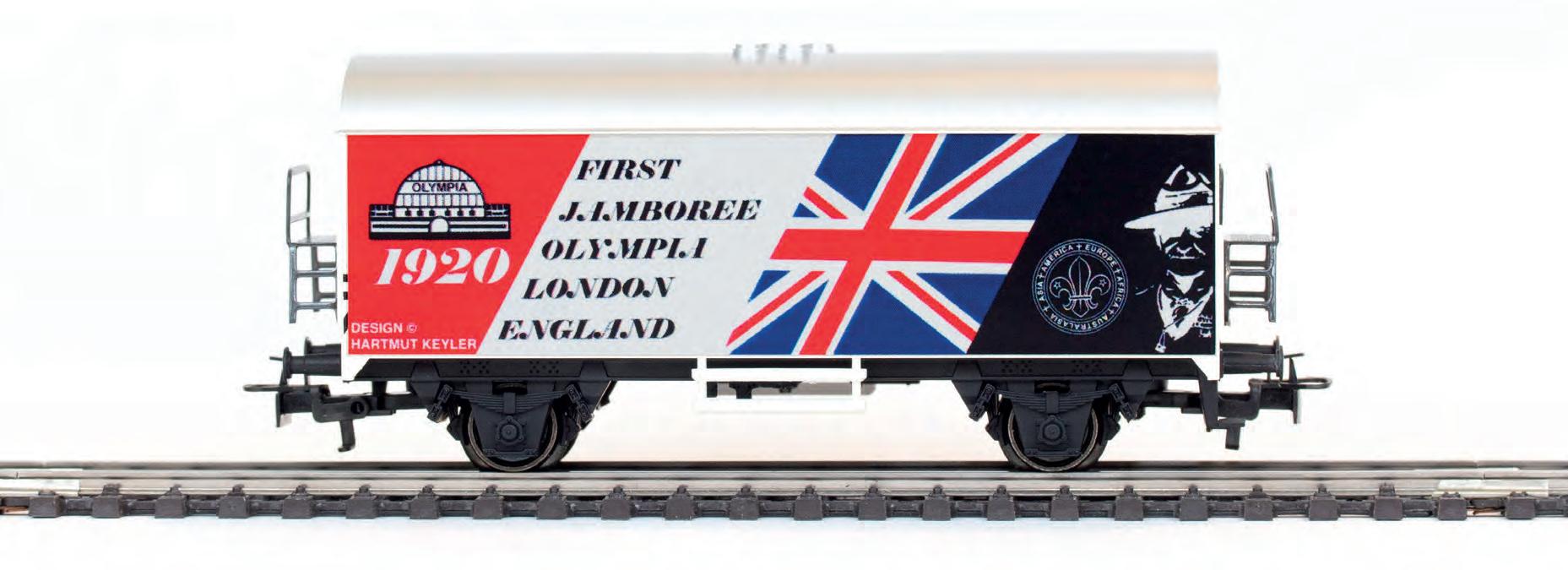
Innovations: a week of hospitality in private homes for Scouts after the event; the World Scout championship. Problems: Too many visitors and a deluge! Baden-Powell named “Bademester” (Danish for “Bathing Master”). 4,549 wet Scouts accommodated by the public for a night.
2nd WORLD SCOUT JAMBOREE 1924
The Jamboree was honoured by a visit from King Christian X of Denmark. Awards for different contests were distributed by Baden-Powell at Copenhagen Stadium.

ERMELUNDEN/COPENHAGEN DENMARK
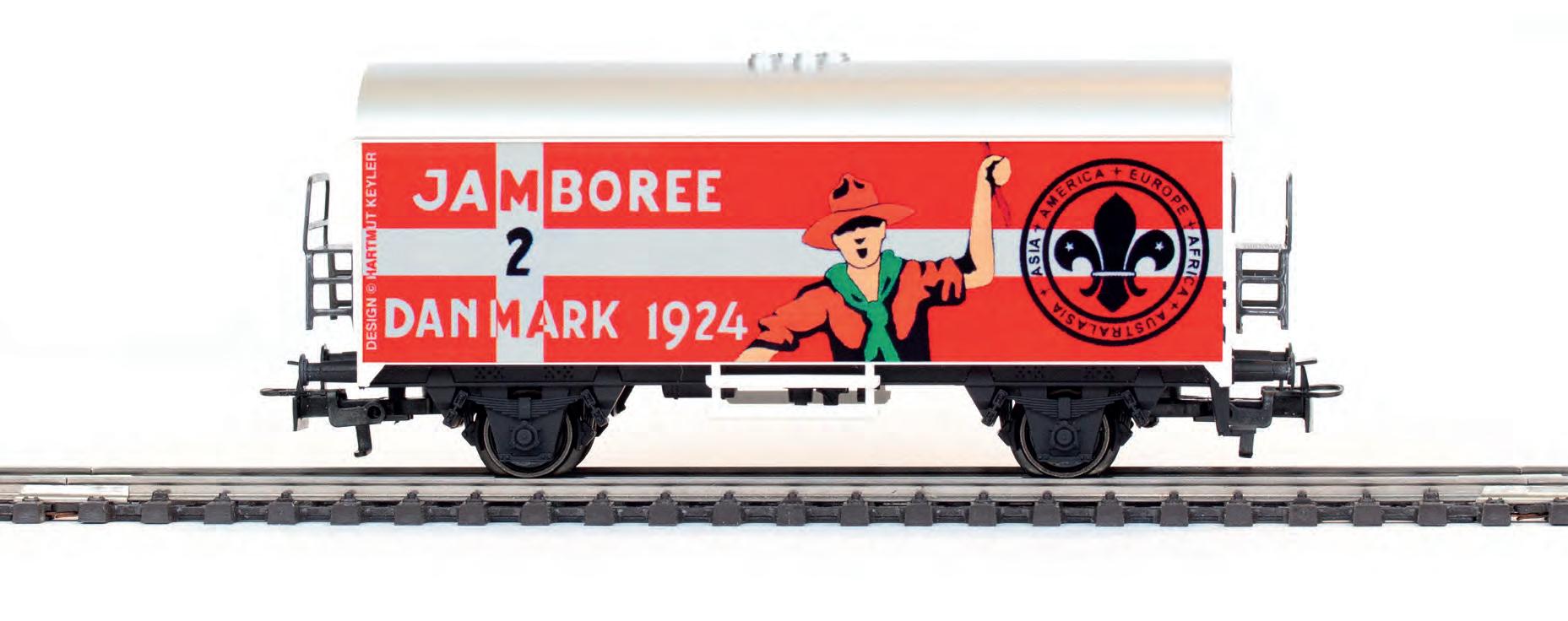
The 20th World Scout Jamboree in Thailand was the focus of our Movement from 28th December 2002 to 7th January 2003. More than 24,000 Scouts, boys and girls, leaders and staff from 147 countries and territories attended the seaside event, living together under the theme: “Share our World, Share our Cultures”.
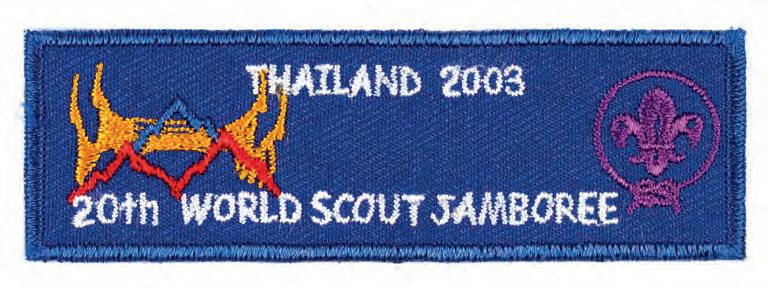
A very busy programme of activities offered lots of fun, with opportunities to develop new skills, make new friends and help people in nearby communities. A large Global Development Village run by 50 organizations provided the forum for learning about issues around the world.
20th WORLD SCOUT JAMBOREE 2002-2003
UNESCO Director-General Koichiro Matsuura inaugurated the GDV. Other highlights included the Crossroads of Cultures, Face the Waves, Our Heritage, Exploring Nature, City of Science, Community Action Day and Tournaments. A record number of 12 religions conducted services during this holiday period, and nearly 83 percent of the participants attended the inter-religious service on 1st January 2003. Operation Sattahip helped fund the participation of 247 Scouts from 93 developing countries, thanks to the money contributed by the Jamboree fees and several Scout associations.
SATTAHIP, THAILAND
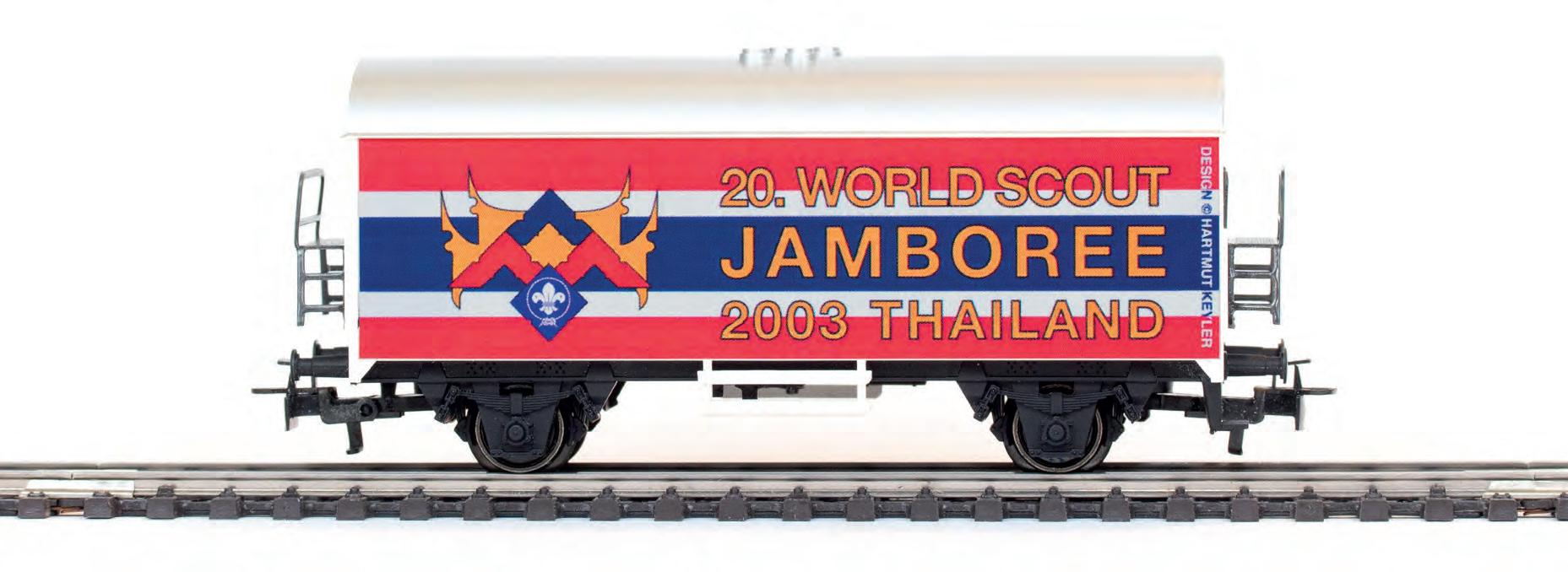
ABOUT THE AUTHOR
HARTMUT KEYLER was born in Esslingen/Neckar, Germany, in 1936. He is an architect, designer and cartoonist. After receiving his schooling in Korntal and Munich, he took an apprenticeship as a carpenter before going on to study architecture in Munich. He then became a freelance architect in the city. He has been married to Gertraud Keyler since 1957 and has three children: Dr. Judith Keyler-Mayer, Andrea Jordan M.A. and Dr. Stefan Keyler. His special interests include ethnology, African arts, Arab history and the arts of Islam, Native American culture, geopolitics, Bauhaus, design and classic jazz. He joined the Scouts in 1949 and was International Commissioner of VCP, the Protestant Scout Association of Germany, and of the German Scout Federation for 25 years. He was a member of the European Scout Committee from 1968-1972 and 1977-1980, a member of the World Scout Committee from 1971-1975 and 1985-1983, and a member of
the World Scouts Honours and Awards Committee from 2005-2014. He holds the Bronze Wolf (1979), the Bundesverdienstkreuz of the Federal Republic of Germany and a large number of other international awards.
“Drawing by hand leads to a deeper understanding of an object. Every artistic transfer is an individual signature – and therefore always an individual interpretation. My hundreds of designs for Scouting, symbols, camp badges, logos of events, corporate identities for Scout Associations and Scouting cartoons – all combined with a deep and longlasting understanding of proven friendship with so many wonderful people whom I had the privilege of meeting during my travels in more than hundred countries – have kept me running through the world with open eyes. I am always open to new challenges and motivated to search for more – just to know more!”
